Gum Disease Treatment - Greenacres, FL
Don’t Let Periodontal Disease
Damage Your Smile

Gum Disease
Causes Lasting Problems
Are your gums tender when you brush and floss your teeth, or do they bleed? This can be the first symptom of periodontal disease. As plaque builds up on your teeth, your gums will become tender, and then they pull away from your teeth. Left unchecked, this loosens the foundation of your teeth, leading to tooth and bone loss and complicating systemic issues such as heart disease and diabetes. Our periodontist, Dr. Fatemeh Gholami, is proud to offer skilled, caring gum disease treatment in Greenacres, FL, helping you stay healthy for years.
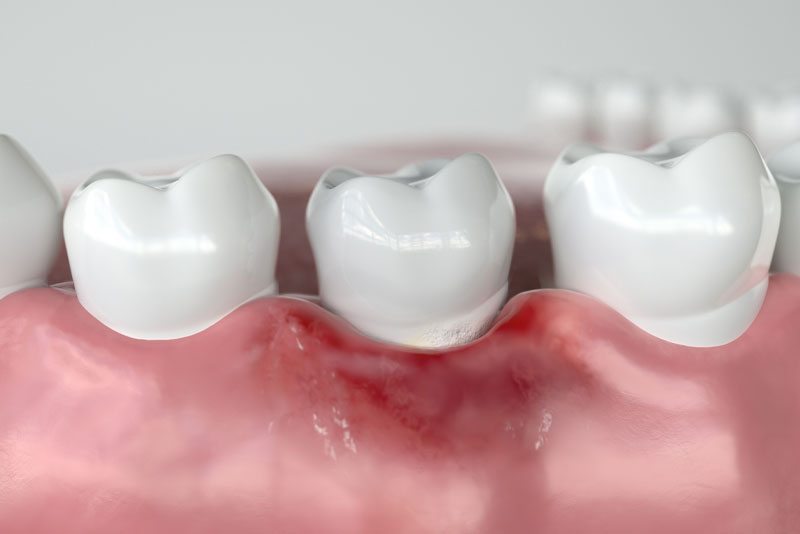
The Warning Signs
of Periodontitis
- Bleeding, tender, or swollen gums
- Persistent bad breath
- Shifting or loose teeth
- Receding gums
- Toothaches

Targeted Treatment for Gum Infection
The prospect of needing periodontal disease treatment can be scary. But the good news is that you can treat and even prevent gum disease! The most effective tool you have is your toothbrush and dental floss. We also recommend regularly getting professional dental cleanings and checkups at Ferber Dental Group.
If you develop gum disease, you’ll be glad to know that our periodontist, Dr. Gholami, has years of experience in gingivitis treatment. In particular, she’s an expert with the LANAP protocol, which allows her to impact your gum disease without needing a huge recovery time. It also helps you manage the cost of your periodontal disease treatment, thanks to needing fewer visits.
Combatting Gum Infection
with Numerous Solutions
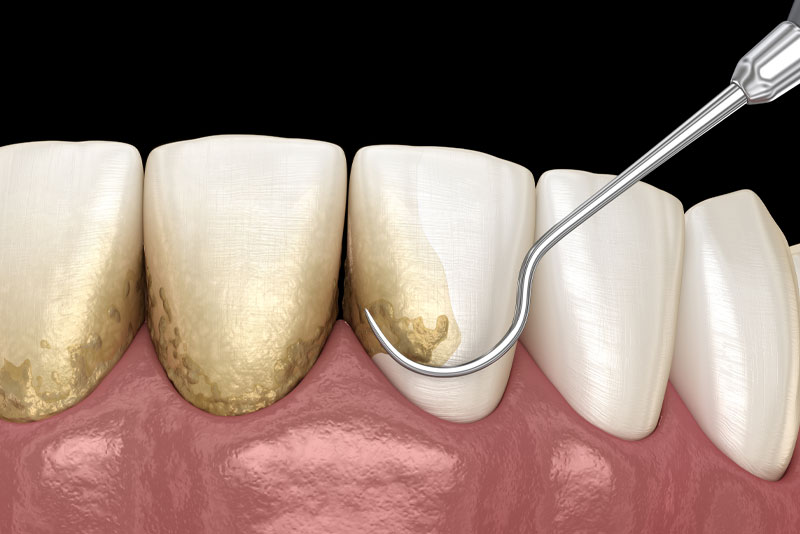
Scaling and Root Planing
During scaling, Dr. Gholami removes plaque and tartar on tooth surfaces with an ultrasonic scaler. A built-in irrigation process delivers an antimicrobial agent below the gum line to help reduce bacteria and remove tartar, plaque, and toxins, especially along your tooth roots. The last step is smoothing the tooth root surface to promote healing and help prevent the recurrence of bacteria in impacted areas.

Periodontal Maintenance
After completing periodontal disease treatment in Greenacres, FL, we recommend scheduling regular maintenance cleanings, usually four times a year. During these visits, we carefully measure the depth of pockets to ensure they haven’t exceeded 3mm, which is considered normal. Stubborn plaque and tartar that are difficult to remove at home are eliminated from above and below your gum line.
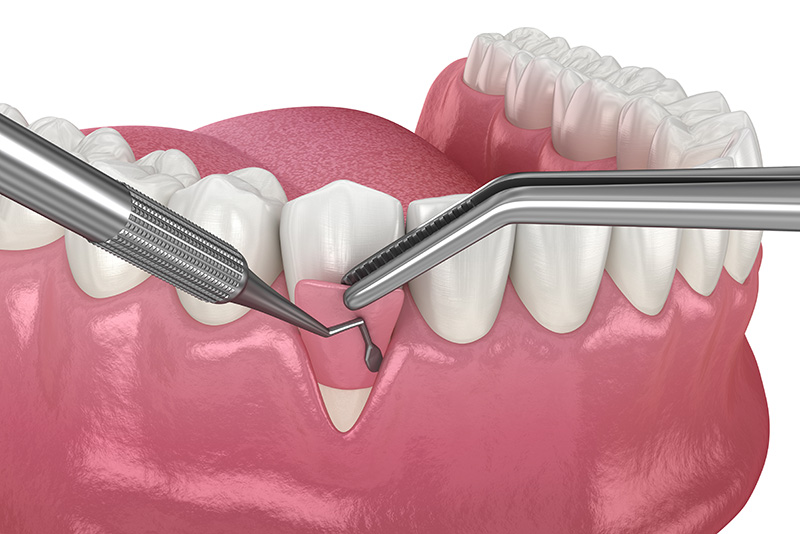
Gingival Grafts
Gingival (gum) recession is common in which gum tissue retreats toward your tooth roots. A gum graft involves taking healthy donor tissue from the palate (roof of your mouth) and grafting it to the receded area. Then your gums are sutured back into place and covered with a protective dressing. Over time, the newly grafted tissue helps existing gums heal and grow back naturally.
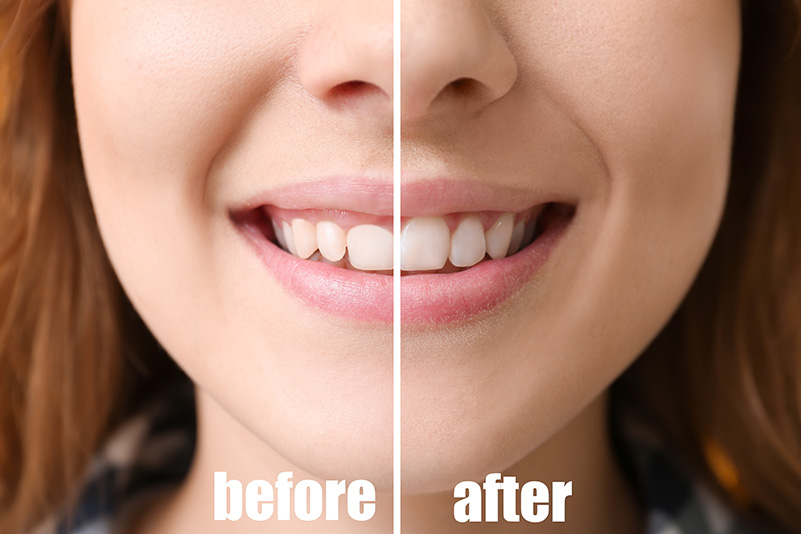
Crown Lengthening
During this procedure, your gums are reshaped at the base of the affected tooth to expose more of its surface. Crown lengthening is performed when teeth are too short, tooth decay is severe below the gum line, or a damaged tooth beneath the gum line requires a crown.

Gingivectomy
Deep periodontal pockets caused by gum disease harbor hidden plaque and tartar. The diseased and loose gum tissue is removed and reshaped during this procedure to eliminate pockets between your teeth and gums and give you a healthier and aesthetic smile.

Frenectomy (Tongue- or Lip-Tie Surgery)
A frenectomy is a simple surgical procedure involving removing the connective tissue membrane that attaches one surface within the mouth to another. A restrictive lingual (upper) frenum may make it difficult for an infant to nurse or feed and later speak. A maxillary labial (lower) frenum that extends too close to the gum line can interfere with the proper growth and spacing of the upper two front teeth.

Peri-implantitis Treatment
Poor oral hygiene and a lack of regular cleanings can lead to a destructive bacterial infection that impacts the area around dental implants. Left untreated, inflammation attacks the bone supporting the dental implant’s root, causing instability, pocket formation, and an increased risk of failure. Early detection is key to a successful outcome because this condition is more aggressive and invasive than gum disease. Treatment typically involves infection control, a laser to detoxify implant surfaces, techniques to regenerate lost tissue and plaque control.
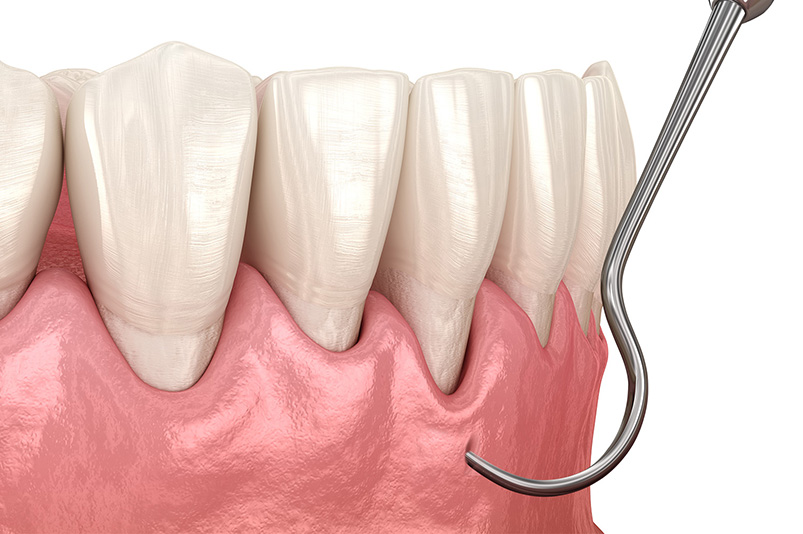
Pinhole Surgical Technique™
The Pinhole Surgical Technique is a minimally invasive procedure that revolutionizes gum recession treatment. Using a specialized tool, the technique gently shifts existing gum tissue to cover exposed tooth roots, eliminating the need for traditional grafting methods. This innovative approach restores gum health and aesthetics and ensures quicker recovery and reduced patient discomfort.

